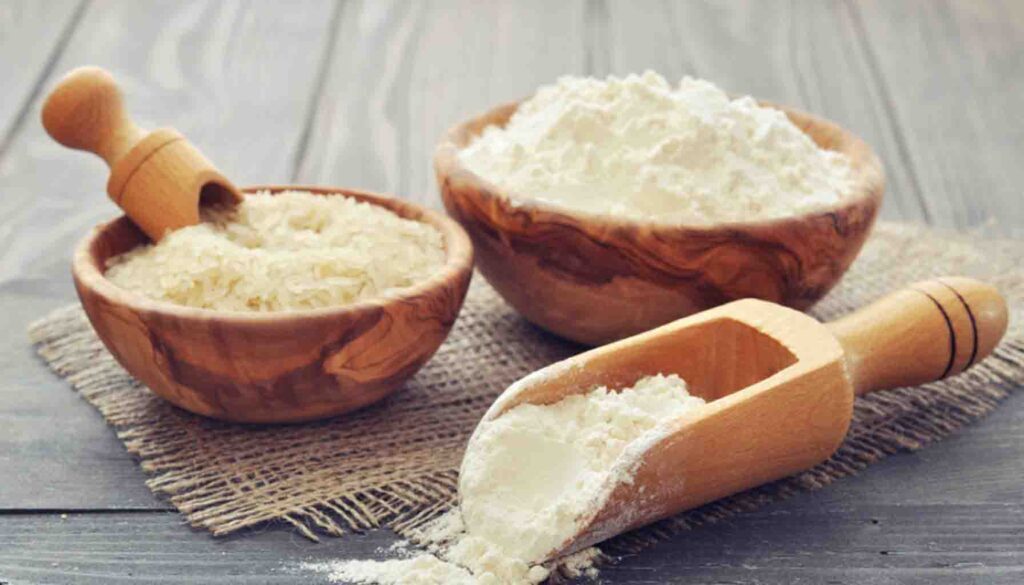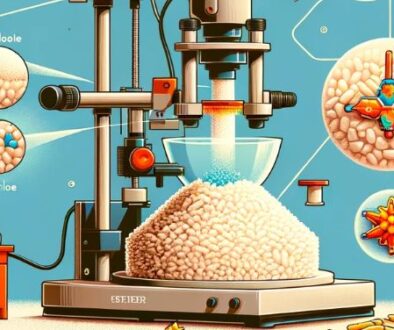Comprehensive Overview of Rice Protein
Discover the benefits of rice protein: superior quality, low allergenicity, and versatile applications. Unlock the potential of nutritious, sustainable protein sources.
Introduction:
Agriculture forms the foundation of the national economy, with grains being the cornerstone of this foundation. Essential for human survival, reproduction, and development, grains serve as a fundamental requirement and form the basis for the food industry, being the primary source of raw materials for all food-related endeavors. Among the vital grains, rice (Oyaza sativa) holds significant importance globally, especially in the Asian region. According to 2007 statistics from the International Rice Research Institute, the world’s annual rice production has reached approximately 533 million tons in recent years, with China contributing 186.5 million tons, claiming a leading position with 35% of the total production. Rice production and consumption are concentrated in Asia, notably in countries such as China, Indonesia, Bangladesh, Vietnam, and Thailand. As the world’s largest rice-producing nation, China’s thriving rice cultivation industry has not only met the demands of its population but has also provided a new growth dimension through the deep processing and comprehensive utilization of rice, contributing to the country’s agricultural economy.
Utilization of Rice Protein:
During rice processing, the focus traditionally lies on starch utilization, neglecting valuable rice protein found in by-products such as broken rice, rice germ, rice bran, and rice husk. This oversight results in substantial waste of protein resources. Rice protein exhibits superior quality compared to wheat and corn proteins, with low allergenicity. Additionally, its amino acid composition surpasses that of casein and soy isolate proteins, making it suitable for meeting the amino acid requirements of children aged 2 to 5 years. This makes rice protein an ideal choice for the development of infant and toddler food products. Furthermore, rice protein can be processed into soy sauce, high-protein powder, protein drinks, protein hydrolysates, and protein foaming powder. When degraded into peptides or amino acids, it can be used to create highly nutritious amino acid solutions for applications in health drinks, seasonings, and food additives. The development and utilization of rice protein are rooted in the research and comprehensive utilization of abundant rice processing products and by-products, providing significant social and economic benefits.
Composition:
Using the Osborne fractionation method, four types of proteins are obtained from rice. Globulin and albumin, as storage proteins, constitute the major components, while globulin and albumin, present in lower quantities, serve as physiologically active ingredients. Notably, albumin, constituting 2%-5% of the total, dissolves in water, weak acids, and dilute alkaline solutions, while globulin, accounting for 2%-10%, dissolves slightly in water, solubilizes in neutral saline solutions, and is prevalent in biological organisms. Over 80% of the total comprises glutelin, easily soluble in dilute alkali and acid but insoluble in water, alcohol, and neutral salt solutions. Alcohol-soluble protein, constituting 1%-5%, dissolves in 70%-80% ethanol but remains insoluble in water and is commonly found in plant seeds.
Structure:
Rice protein primarily exists in two protein bodies (PB) forms, namely PB-I and PB-II. Electron microscopy reveals that PB-I protein bodies exhibit a lamellar structure with dense particles ranging from 0.5 to 2 μm in diameter, containing alcohol-soluble protein. PB-II, on the other hand, has an elliptical shape without layering, a uniform texture, and a particle diameter of approximately 4 μm, with indistinct outer membranes where glutelin and globulin reside. These two protein bodies often coexist.
Properties:
- Solubility:
The solubility of rice protein is limited, mainly due to over 80% of alkaline-soluble glutelin forming large molecular fragments through disulfide bonds, cross-linking and aggregating with each other. Only 2%-5% of rice protein dissolves in water as albumin. Research on the pH impact on rice protein solubility indicates slow growth in glutelin solubility at pH 4-7, with a rapid increase approaching pH 9. Modifications also influence rice protein solubility, with studies revealing that as deamidation increases from 19.6% to 64.5%, rice protein solubility rises, reaching a maximum solubility of 96.6%. Comparative analyses of various proteinases suggest that alkaline proteinase performs better than others. Nevertheless, optimization experiments reveal that even under favorable conditions, the solubility achieved through alkaline proteinase hydrolysis alone reaches a maximum of 43.12%. Combining alkaline proteinase and composite proteinases achieves the highest solubility at 71.46%, outperforming the combination of alkaline proteinase and other enzymes, while using composite proteinases first and then alkaline proteinase results in a solubility of only 54.73%. Therefore, different enzymes exhibit distinct hydrolysis characteristics on rice protein molecules. - Emulsification:
Emulsification includes emulsification activity and emulsion stability, both crucial functions of proteins. Studies indicate that measures enhancing rice protein solubility contribute to improving its emulsification performance. Once glutelin is dissolved, its emulsifying ability is comparable to that of soy protein. RPI and E-RPI, after treatment with Na2SO3, exhibit significantly improved emulsification performance, suggesting that relieving the aggregation of subunits in rice protein molecules can enhance its physicochemical functionality. - Foaming:
Studies reveal that modifying rice isolate protein with alkaline proteinase, such as Alcalase, significantly improves its foaming properties. After alkaline proteinase extraction of rice protein, foaming properties increase with protein concentration at neutral pH, with optimal foaming and foam stability observed at pH 6.8 when rice protein solution approaches neutrality. Alkaline proteinase-extracted rice protein exhibits superior foam stability compared to papain-extracted rice protein, with minimal differences in foaming properties under various pH conditions. Overall, both types of rice protein show increased foaming properties and stability with increasing concentrations. Papain-extracted rice protein generally exhibits better foaming properties and stability than alkaline proteinase-extracted rice protein. - Water Holding and Oil Holding:
Protein water-holding capacity is closely related to the preservation and shaping of food during storage, while oil-holding capacity is influenced by protein type, source, processing method, temperature, and the type of oil used. Due to the poor solubility of rice protein, its water-holding and oil-holding capacities are restricted. However, deamidation modification improves both properties. At a deamidation degree of 35.7%, water-holding capacity is minimized, and oil-holding capacity reaches its peak. At a deamidation degree of 42.4%, water-holding capacity is equivalent to oil-holding capacity.
Elevate Nutrition with ETprotein’s Premium Rice Protein
In the realm of rice protein exploration, consider ETprotein as your premium choice. Renowned for its commitment to quality, ETprotein offers a superior rice protein that aligns seamlessly with the discussed attributes—excellent solubility, impressive emulsification properties, and enhanced foaming capabilities. This premium rice protein not only meets nutritional demands but also provides versatile applications, making it an ideal choice for health drinks, seasonings, and food additives. Elevate your nutritional journey with ETprotein’s rice protein, ensuring a blend of excellence, sustainability, and innovation in every consumption.
Conclusion:
In conclusion, the exploration and rational utilization of protein from rice bear immense social and economic significance. As a valuable resource, rice protein not only contributes to the nutritional requirements of diverse age groups but also serves as a foundation for the development of innovative food products. The study of its composition, structure, and properties lays the groundwork for maximizing the utilization of rice protein, addressing both economic and societal needs.












